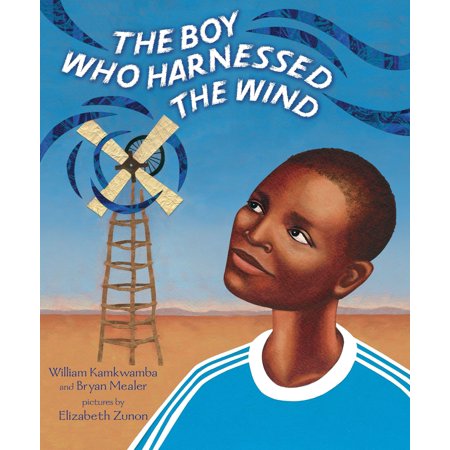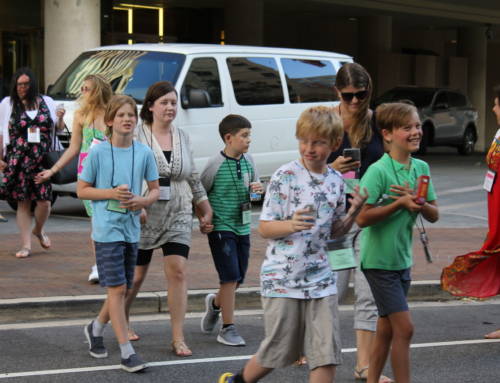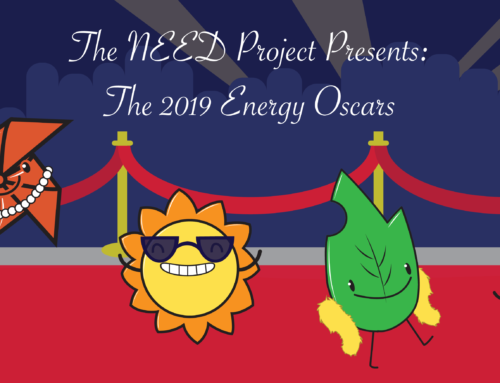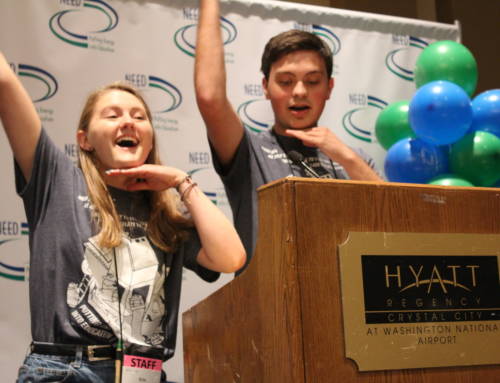Your students already love building and testing NEED’s wind turbines. Stretch that excitement and students’ learning by integrating this science topic into other areas you teach. The following ideas are inspired by a new children’s book, The Boy Who Harnessed the Wind (c. 2012), by William Kamkwamba. While this book is aimed at 7-9 year olds, its illustrations and inspirational story can be enjoyed by all ages as the starting point of your integrated wind unit.
The Boy Who Harnessed the Wind is an inspiring true story about a 14 year old who pushes through adversity to improve the life of his family. In 2001, Malawi was facing a serious drought and famine. William Kamkwamba’s large family of farmers was dying from starvation. Without any money, he could not attend school, so William taught himself English and studied old science textbooks in a local library. He was interested in how mechanical things work, and after seeing a picture of a windmill that generated electricity and pumped water, he was determined to save his family by building one. William built a small windmill out of junkyard items, which lit one light bulb in his bedroom. While this is where the picture book ends, William’s story continues. Over the years, he built a windmill that pumped water for his mother’s garden, and used a car battery to store enough energy to power four light bulbs in his home and charge the neighbors’ cell phones. In 2007, William’s achievements were discovered by journalists, and his life changed forever. After a prestigious speaking engagement, mentors and donors donated money to send William back to high school and funded additional projects, such as installing a solar-powered water pump to irrigate his father’s fields and bringing clean drinking water to the village. William is currently a student at Dartmouth College.
Social Studies integration ideas:
- Locate Malawi on a globe or world map. Research its climate. Discuss why Malawi faced drought and famine in 2001-2002.
- NEED’s activity, Energy Around the World, compares key characteristics of other countries to the United States (such as population, per capita income, literacy rate, climate, electricity generation, energy resources and usage, and environmental concerns). Malawi is not one of the countries already profiled, so have students do research and create a profile for Malawi as part of the activity.
- Make and eat Maize Porridge (Nsima), the single meal eaten by William and his family each day. William blogged his recipe to prepare this basic Malawian food and included a picture of himself cooking that your students will enjoy seeing. Read his Aug. 4, 2011 entry at http://williamkamkwamba.typepad.com/williamkamkwamba/2011/08/how-to-make-nsima-.html.
Language Arts and Fine Arts integration ideas:
- NEED’s Today in Energy is a pretty quick activity to get younger students thinking about how they use energy each day. After completing Today in Energy, ask students to reflect on the differences between William’s life and their own. What would it be like to live without electricity? Without clean water? Eating only one meal a day? Write a journal entry or essay responding to these questions and summarizing your reflections.
- NEED’s Energy Stories and More includes short stories and supplemental activities appropriate for younger students (or for older students to prepare and use in teaching younger buddies). Create classroom storybooks by printing short sections of text onto separate pages, and assigning each student one page to illustrate. Recommended stories include: A Trip to the Farm, The Tale of Windy Wizard, and The Power of Conservation. Add a fine arts component by designing your illustrations in the style of Elizabeth Zunon, the illustrator of The Boy who Harnessed the Wind. Her oil paint on paper layered with cut paper technique is strikingly original.
Science and Technology integration ideas:
- You are probably already familiar with NEED units that cover wind as a source of renewable energy through informational texts, lesson plans, and hands on kits, but have you looked at Wind for Schools? You can complete the activities in this unit even if your school isn’t blessed with its own turbine. Some activities include taking on roles in the wind industry to predict electrical output of a working turbine, comparing real turbine models, investigating classroom energy use and corresponding electricity costs to determine which turbine system best meets your school’s needs, investigating how geography affects wind power, and making wind energy calculations.
- Challenge students to design and engineer an item to improve their lives out of discarded or recycled items.
Service Project or Youth Awards Project idea:
- If William’s story inspires your students, they might want to get involved with his nonprofit organization www.movingwindmills.org and carry out a Youth Awards Project that raises funds for one of his current projects, such as installing a windmill at a primary school in his village or providing science books for the library.
A guest blog by Cindy Welchko, Curriculum Associate for The NEED Project




